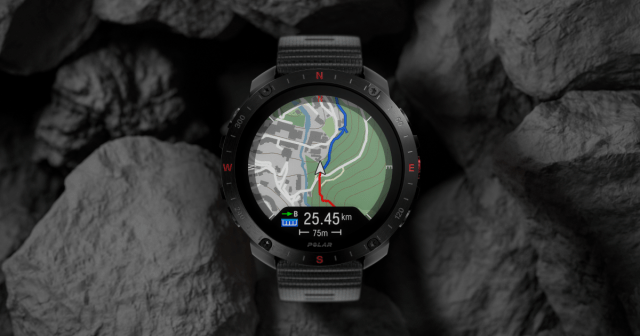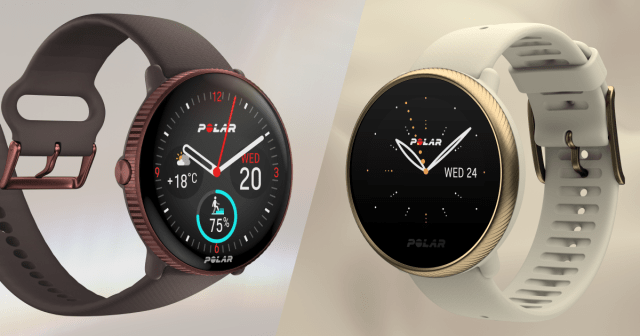The end of one year and the start of a new one is always a time for reflection. An opportunity to cast your mind back across what has occurred and consider everything – both planned and unexpected – that has shaped our lives.
The start of 2021 was significantly different. As we try to make sense of 2020 – a year of extraordinary change – it’s almost incomprehensible how much we have been transformed, on both a macro and micro level. Virtually every person around the world has felt the impact of the pandemic.
One of the surprising outcomes from 2020 has been the way we think about, and take responsibility for, our individual health. At Polar, our incredible research team has had a unique insight into the development of these changes throughout the past year.
So, we thought we would share some of their observations on the way last year changed our approach to wellbeing.
Cause for concern
In the first quarter of 2020, there were rapid lifestyle changes as most countries sought to stop the spread of Covid-19.
People everywhere were encouraged to keep their distance from anyone outside of their household. In many cases, people were prevented from going to work, traveling on public transport, or even leaving their homes as a means of preventing contact.
This encouragement to stay home and maintain social distancing saw many health and fitness facilities close for a considerable portion of the year. Public gyms and pools were closed, exercise classes were canceled, and indoor sports were banned due to the increased risk of transmission.
While these restrictions were very necessary, the sudden downturn in physical activity due to everyone staying home was also going to have an impact on our general health and fitness.
Scientists were concerned that both working from home and losing access to indoor fitness facilities would encourage a more sedentary lifestyle, and in turn, increase further health problems.
What happened
Based on wearable data, the Polar Research Center has been able to look at the way we have behaved when it came to exercise, sleep and use of Polar products during 2020 and compare them with the previous year.
As we reported in early 2020, anonymized data from active Polar users showed that our exercise styles and sleeping habits were transformed by the events of 2020.
Our research team looked at this data at two key points last year – March and October – and identified the following trends.
We moved outdoors
As indoor activities (outside the home) became restricted, we shifted towards different forms of exercise that were available outdoors.
There was a noticeable swing towards open-air pursuits such as walking, cycling, mountain biking, and Nordic walking because these activities allowed us to maintain distance from other people.
We upped our steps
These new, outdoor forms of exercise meant that there was an increase in our daily steps and a decrease in our general inactivity.
This is a surprising trend as you would assume that stopping our daily commute to work from home would in many cases cause us to be less active.
Evidently, we were mindful of this change and sort to counteract it.
We slept longer
As our lifestyles shifted, so did our sleeping patterns. On weekdays, we slept for an average of 14 minutes longer as our mornings no longer required us to commute. This small but significant average shows that our general rest, relaxation, and recovery were enhanced.
We became more data curious
The above changes to our physical activity and sleep also saw us become more curious about our individual health and progress. There was a notable increase in the number of people using wearables throughout the year, with a significant upswing occurring between Oct-19 and Oct-20.
How 2020 Has Changed Our Health
From the trends detailed above, it’s clear that the pandemic motivated adults from across the globe to focus more on their fitness and health.
During the first half of 2020, there was a big push from the science and medical community for adults to take responsibility for strengthening their immunity. From regularly washing our hands to quitting smoking and maintaining a healthy weight, it became increasingly clear that the everyday choices we made could help us decrease our risk of becoming seriously ill with Covid-19.
The upside is that this has also enhanced our understanding of our health and fitness in general. This increased physical activity literacy in adults became apparent as saw the immediate benefits of an active lifestyle and turned this into practice. This corresponded with the increased number of people beginning to use wearables as a means to understand their overall wellbeing and prevent health problems.
The shift in our daily schedule for many adults had a big impact as well. The time saved from our commuting to work as we worked more from home meant that our lifestyle looked very different. We slept for longer and found more time for physical activity outdoors. This also became a source of extra mental energy for adults during a very challenging period.
Our way of life may have been transformed forever by the events of 2020.
If we’re looking for reasons to be hopeful, this increased health awareness and understanding of individual responsibility does point towards a change for the better. We look forward to seeing what the data shows us in 2021.
If you liked this post, don’t forget to share so that others can find it, too.
Or give it a thumbs up!
I like this article
Please note that the information provided in the Polar Blog articles cannot replace individual advice from health professionals. Please consult your physician before starting a new fitness program.




